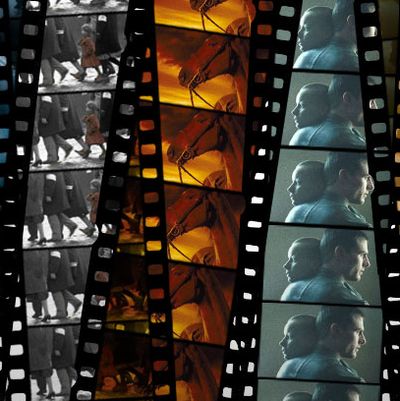
Few men know Steven Spielberg as well as Janusz Kaminski. The Oscar winning, Polish-born cinematographer has shot all of Spielberg’s films since 1993, and their latest collaboration, Lincoln, is in theaters now. (Our David Edelstein reviews it here.) What better time, then, to talk to Kaminski about how he managed to create some of the most interesting shots and sequences in Spielberg’s modern ouevre? Here are eleven striking images and moments from films like Lincoln, A.I., and Schindler’s List, followed by commentary from the cinematographer himself.
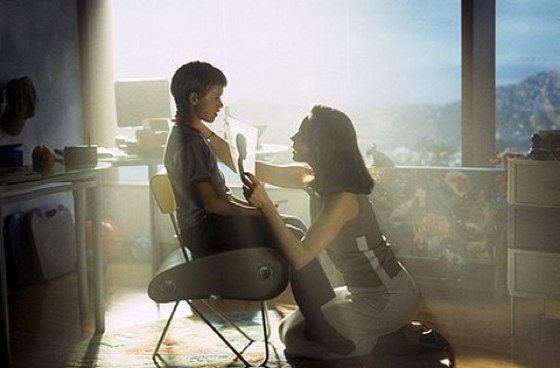
A.I. Artificial Intelligence
Kaminski has a particular affinity for this shot, where Haley Joel Osment’s child robot imprints on his mother for the first time in a room suffused with tremendous backlighting, one of the cinematographer’s visual trademarks. (There’s plenty of light streaming through windows in Lincoln, too.) “You get criticism for that kind of lighting and you get prizes for that kind of lighting,” laughs Kaminski. “Some people say, ‘Enough of this, move on,’ but I like it! Light is life, and for me, the presence of light is essential.” Still, there is a purpose to all that white light, beyond simply engineering a dramatic look. “I love backlight not just for the sake of glamorizing [the subject], but because the direction of the light can represent storytelling,” says Kaminski. “I don’t do backlights and then also add key lights and all these things — if I do backlight, I want to see that backlight. That’s my style, and that’s the way we’ve done it in every single movie.”
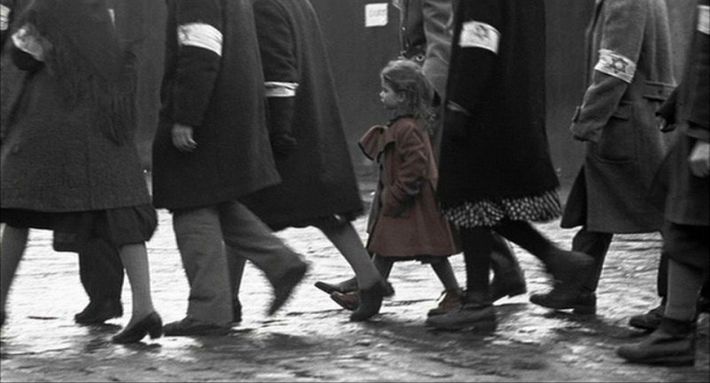
Schindler’s List
Kaminski won an Oscar for this Holocaust drama, his very first feature film with Spielberg. Impressed by Kaminski’s work on the Diane Keaton-directed Wildflower, Spielberg hired him to shoot a backdoor pilot he was producing for ABC called Class of 1861, about West Point cadets torn apart by the Civil War (which failed to earn a pickup, despite a now-starry cast that included Clive Owen and Laura Linney). Soon after, Kaminski got the call for Schindler’s List. “They told me it was low-budget, but to me, it was huge-budget,” laughs Kaminski. “It was $22 million, but in Poland, that was a lot of money!” Kaminski shot most of the film on black-and-white emulsion, save for the sequences featuring the little girl with the red dress, which were shot in color emulsion and then painstakingly desaturated in a process called rotoscoping, which Kaminski describes as “an old version of CGI, except each frame was done by hand.”
Saving Private Ryan
Kaminski spent plenty of prep time figuring out just how he would shoot the vicious opening battle sequence of Saving Private Ryan: “I was experimenting with different things: frame rate, shutter degree, various degrees of color desaturation, various lenses, shooting in 12 frames and then printing it to 24. You keep trying out these different techniques until you see something that you can emotionally respond to. At first it was very crude: I would just shake the camera.” Still, notes Kaminski, “All the tests are pointless if you have a director who gets scared, who cannot comprehend the visuals. This was all done to the negative, there’s no going back. Once it’s shot, it’s done, and if you don’t like it, you have to reshoot it.”
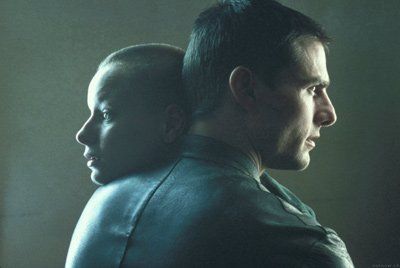
Minority Report
In a four-star review of Spielberg’s 2002 sci-fi film, Roger Ebert spent a paragraph praising this “virtuoso shot” of Tom Cruise and Samantha Morton, calling it an image “that’s powerful and yet bafflingly simple.” “That’s nice of Roger,” says Kaminski. “It’s just a gorgeous shot of two lost people. I used a bluish side light, which to some degree glamorized them, but also made them very lonely and alienated from the rest of the scene. You work in metaphors through lights and composition, and the worst thing for me is to see a movie that doesn’t have that. You see a cinematographer’s work and there are no visual metaphors, or they are so afraid to create a style that it just becomes this nothing.” Kaminski washed the film in moody blues and grays as an homage to film noir, noting, “It’s a big palette, the movie screen. I dare to compare myself to painters, but I just have a bigger canvas to adapt to. If you don’t like my painting, don’t see the movie, you know?”
The Lost World: Jurassic Park
Kaminski didn’t shoot the first Jurassic Park film, and he says he was under no pressure to replicate its look for the sequel. “The money was already made on the first one, so people were more relaxed,” laughs the cinematographer. “It is a scary movie, so we could go slightly more darker, more like a genre movie, closer to horror almost.” But not too dark: Kaminski credits Dennis Muren at special effects house Industrial Light and Magic for allowing him to backlight dinosaurs, as he did during this complicated safari sequence full of lens flares: “He encouraged me to shoot against the sun or to introduce the dinosaurs as a silhouette or moving against a bright light. Prior to that, it was hard to achieve because things were still at a very infantile stage of CGI work.” In fact, Kaminski notes that “The Lost World was a very big departure for me because I’d never done a CGI movie before — not that it’s an all-CGI movie, but it had 150 or 200 CGI shots, which then was humongous. Now, it’s just a normal movie.”
War of the Worlds
This long shot where Cruise and his children flee in their car is meant to resemble one single take, but it was actually three different elements stitched together digitally, says Kaminski. First, the filmmakers blocked off a Long Island freeway and shot the exteriors using a motorcyclist as the guide for Cruise’s car, then they shot plates for the outside of the car by attaching cameras to it on all sides. Finally, Spielberg and Kaminski filmed the actors in the car on a soundstage, repeating the same camera moves from the previous two shots. “ILM brilliantly married all those elements and created this really wonderful thing,” says Kaminski. “Luckily, when we did the first plates, there was no sunlight. If it hadn’t been a slightly overcast day, if we’d had direct sunlight and camera shadows, this would have been much harder.”
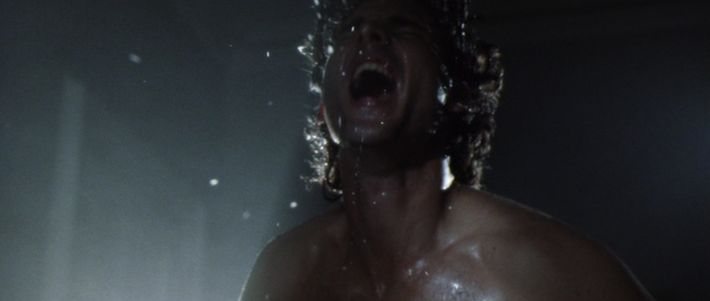
Munich
“It’s almost over-the-top to some degree, right?” admits Kaminski of the scene that’s quite literally the climax of Spielberg’s fact-based thriller: A sex scene featuring Eric Bana that’s intercut with the murder of Israeli Olympic athletes as he orgasms. “It’s not a delicate little scene,” Kaminski says. “It is what it is, and [Spielberg] wanted to take this chance because it reflected the movie: his anger, his primal fear, his primal desire to be alive.” Aside from a few R-rated moments in Schindler’s List, Kaminski has shot no other sex scenes for Spielberg, but he said the lovemaking was vital here: “To be with a woman allows you to be who you are, and [Bana’s orgasm] reflects the state of Israel and how sometimes it feels like it wants to scream and yell. That’s how I understood the scene, at least.”
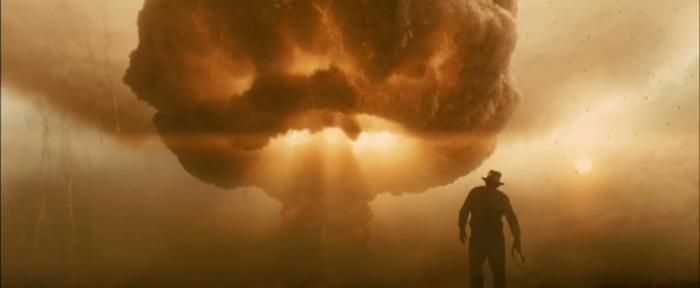
Indiana Jones and the Kingdom of the Crystal Skull
“No sex in that one!” laughs Kaminski. Of this striking shot — which ends the film’s notorious “nuke the fridge” sequence — the cinematographer said, “That’s ILM, baby. ILM did all that. They do magic. We put a lot of dust into the air, but everything else was ILM.” And though Kaminski broke with tradition when shooting the Jurassic Park sequel, here he hoped to emulate the cinematographer behind the first three Indy movies. “I was trying to match the visual aesthetic of Douglas Slocombe and sometimes I succeeded, and sometimes I didn’t,” Kaminski says. “The technologies and film emulsions are a little bit different now — they don’t make them like they used to. But I didn’t want to reinvent the wheel, because this trilogy is a part of film history.”
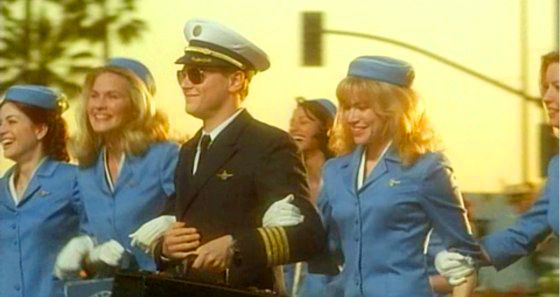
Catch Me If You Can
“I’ve always felt that the movie was like champagne coming out of the bottle, with bubbles and warmth,” says Kaminski of Spielberg’s Leonardo DiCaprio crime caper. “It’s probably the most colorful movie that I’ve done with Steven, but it was very hard work, because we did this movie in 46 days. And with a period movie, you have to be careful, because if you even point the camera ten degrees to the right, you might get modern ugliness [in the frame].” Case in point: the shot above, which looks deceptively simple. “It’s lit really seriously, and I have huge lights right in front of the actors because otherwise they would just be silhouetted against the sky. It’s lit, man! But that’s what gives you that glossy feeling, because you’ve got that beautiful front light with a backlight behind them, and Leo looks very jovial and the girls are beautiful.” Kaminski says he found his inspiration for the shot in old Life Magazine photoshoots that glamorized 1960’s airline pilots: “The pilots were the stars, and there was a fantasy that goes with not just flying across the world but potentially having sexual intercourse with women around the world! They were gigolos, you know?”
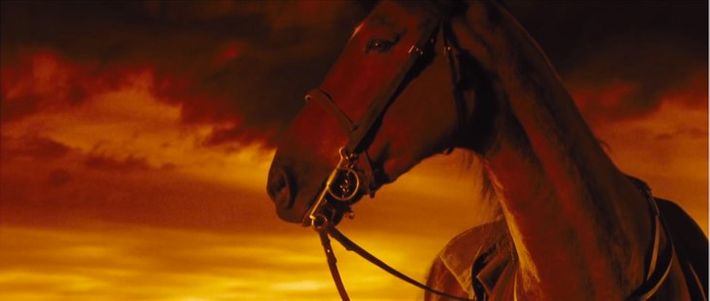
War Horse
This image from the final scene, shot against the saturated red sky, may call to mind historical epics like Gone With the Wind, but Kaminski says the resemblance is unconscious. “I didn’t even know there was an image similar to that [in Gone With the Wind]!” he protests. “It just felt right, that this boy coming back from his journey as a man deserves to be treated in a very heroic way, and the composition reflected that.” Not that it was an easy shot to achieve naturally: “There were a lot of filters,” Kaminski says. “Silhouette filters, orange filters, graduate filters … we staged the scene during the last two hours of the day, and we shot it for two days, but the sky had no red in it, and if I didn’t light the actors, I would not be able to close the aperture and you would never see those clouds. So you start bringing huge lights and lighting people frontally to get a little separation from the sky. It was a complicated shot that many people appreciated.”
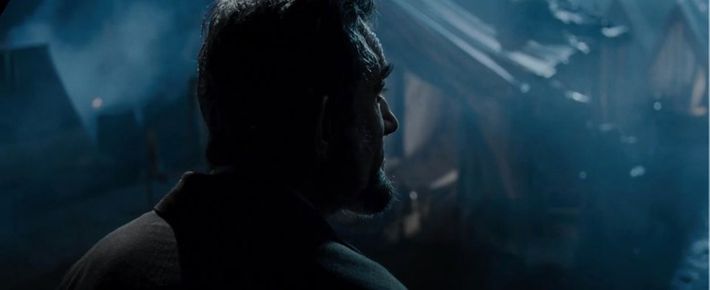
Lincoln
Why do Kaminski and Spielberg hold back on showing you Daniel Day-Lewis’s Abraham Lincoln during the first scene in their biopic? “He’s talking to the troops who see him as an icon, so we wanted to frame the first image in an iconic way,” explains Kaminski. “In order to obtain the mystery in him, I didn’t put too much light into his eyes.” Still, in later scenes — like one where Lincoln calmly entertains his son in the White House while a divided Congress votes on the 13th Amendment — Kaminski sought to play against that iconic image: “You always have to think, ‘What does this represent? What’s happening outside the scene?’ Well, he’s waiting for the votes to come through, and even if you’re a moron who doesn’t know history, you know that the amendment was passed because the hopefulness and the light quality of that image would tell you that the amendment is going to pass.” The result is an angelic but natural shot of Lincoln bathed in light. “I wanted to create a very intimate image of this man on the most important day of his life: He’s still a father, and he’s still allocating time to be with his family and his son,” says Kaminski. “So there were situations where I was trying not to be iconic, but very few. You are making a movie about Lincoln: He’s an icon, so the photography and the composition needs to reflect that.” Adds the cinematographer, “You can’t really show the man taking a dump, you know?”




